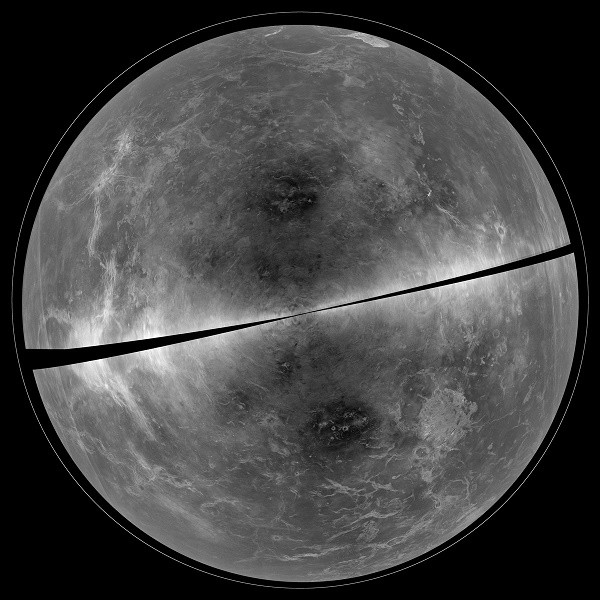Astronomers have confirmed that they have already pierced through the thick, toxic cloud of Venus using radar techniques in order to reveal what lies beneath the intense atmosphere shrouding the planet.
Venus has been considered to possess a featureless sphere where its thick clouds made from carbon dioxide hides the planet's surface into obscurity.
However, a new radar image obtained from the National Radio Astronomy Observatory reveals the detailed face of Venus, showing its volcanoes and craters.
This new image is made possible with two Earth bound instruments namely the National Science Foundation's Green Bank Telescope which is a radio telescope found in West Virginia and the radar transmitter from the Arecibo Observatory in Puerto Rico.
NRAO released a statement explaining that these radio signals were received from the Arecibo Observatory as they passed through Earth's atmosphere, from Venus' atmosphere. These signals hit the surface of Venus and bounced back where the Green Bank Telescope received these via a process called as bistatic radar.
However, this is not the first time that Venus' surface has been mapped. NASA's Magellan probe has already observed its surface along with Earth bound radar telescopes so that astronomers will be able to study images that are taken over time.
Images taken over a period of 1988, 1999, 2001 and the latest ones from 2012 allowed a thorough comparison that could help monitor significant changes on the planet's surface such as volcanic activity.
Even if this has been a painstaking process to compare radar images in search for evidence about these changes, the work is still ongoing, says senior scientist Bruce Campbell, from the Center for Earth and Planetary Studies of the Smithsonian's National Air and Space Museum.
He adds that combining images from recent and earlier images during the observing period has provided pivotal insight about the processes that alter the surface of Venus.
To date, scientists are still observing these changes as they are still uncovering what kinds of geological processes that could still be active on Venus. In the last two million years, a number of volcanoes has been active as well, which is relatively recent in geological timelines.



























